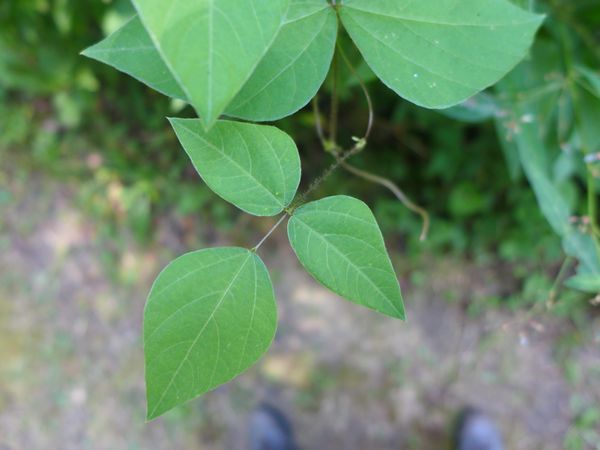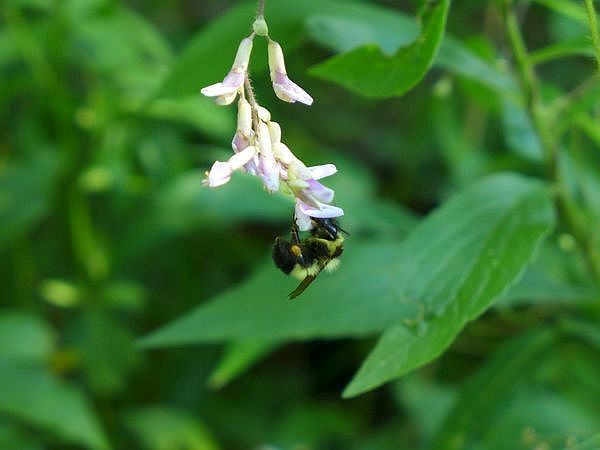
On a sunny day last week I went to Jennings Prairie to see the wildflowers. My old favorites were there — dense blazing star, tall sunflowers, culver’s root — but this plant was new to me.
Hog peanut (Amphicarpaea bracteata) is a member of the Bean family (Fabaceae) but its leaves caught my eye because they share some field marks of poison ivy.
Like poison ivy, two of hog peanut’s three leaves are asymmetrical and have no stem, the middle leaf has a stem, and the vine is hairy. Unlike poison ivy, hog peanut leaves are egg-shaped and have smooth edges. See the difference for yourself by comparing these photos of poison ivy leaves and vines.
Hog peanut got its name because it produces edible beans that are eaten by ruffed grouse, ring-necked pheasants, mice, voles and — apparently — hogs.
Most of the beans are produced by its insect-pollinated flowers shown below but some come from self-fertilizing flowers that grow on runners along the ground.

Although hog peanut is an annual, chances are good that you’ll find it in the same location year after year because its ground-based flowers go to seed.
Look for hog peanut in wooded areas along streams and seeps and on floodplains. I found this one at the “Detour” bridge at the prairie.
(Note: The big bridge on the Blazing Star Trail is under construction. The detour is obvious and easy.)
(photos by Kate St. John)